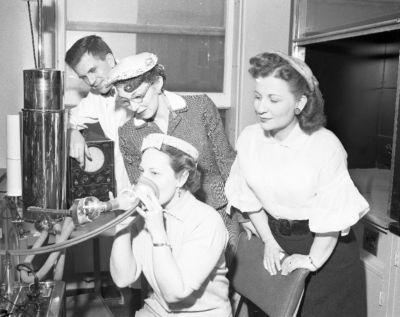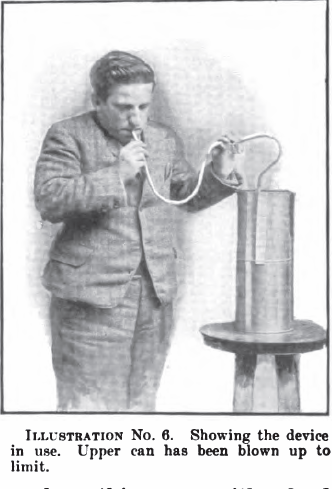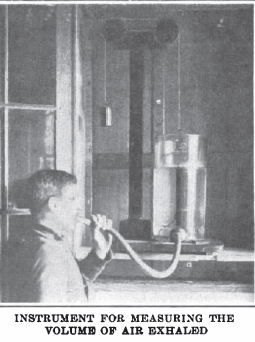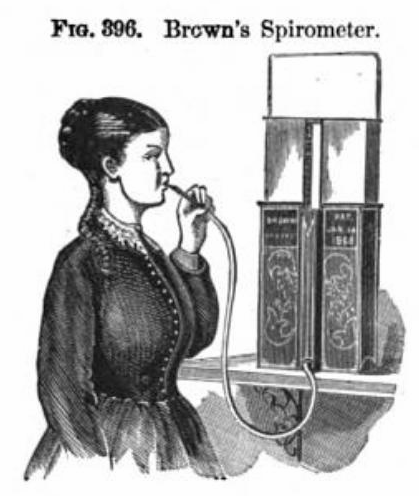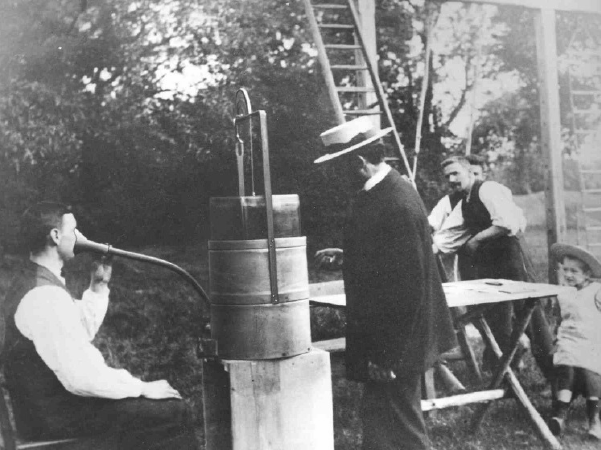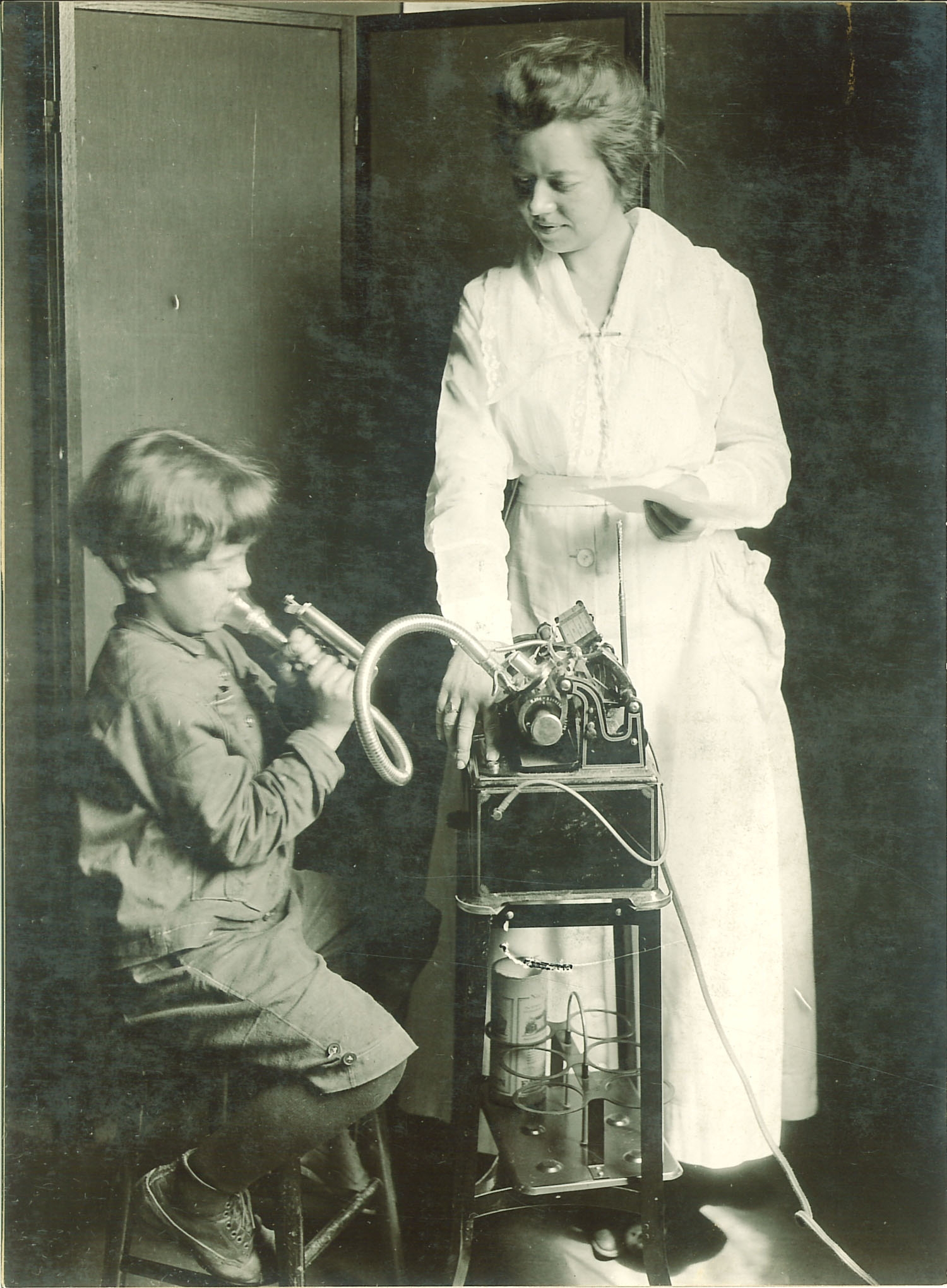From the Spokane Daily Chronicle, November 11, 1969, page 3.
Category Archives: Spirometry
Spirometry, 1954
Spirometry, 1850
From: Die Erkenntniß der Krankheiten der Brustorgane aus physikalischen Zeiche n oder Auscultation, Percussion und Spirometrie: Nach Heribert Davie’s Vorlesungen u. eigenen Beobachtungen by Johann Friedrich Hermann Albers, 1850. Endplate.
Notably, this book was published only 4 years after Hutchinson’s treatise on the vital capacity yet his original design for the spirometer appears to have already been modified. The developer of this spirometer was not named in the text.
Spirometry, 1921
From: The assessment of physical fitness by correlation of vital capacity and and certain measurements of the body. By Georges Dreyer and George Fulford Hanson, 1921, page 9.
“The subject should be seated on a high stool with his back straight, opposite the spirometer, the dial being so placed that he cannot see the readings. This is done for the purpose of keeping him in ignorance of the readings while be examined, as it is found that any such knowledge tends to interfere with the accuracy of the results. The neck, chest and abdomen must be free from any obstruction to free movement, such as collar belt or stays. The subject is asked to fill the lungs to the maximum capacity, then the nose is held with one hand, the mouthpiece is placed well inside the lips with the other hand in such a manner as to prevent any escape of air round it. He now blows steadily into the tube, and empties the lungs as completely as possible into the spirometer, being encouraged during the last period of expiration to make the utmost effort to expel all air from the lungs. The readings are given in liters and decimals of liters, to be read directly from the dial. After each expiration the needle on the single liter dial should be brought back to zero by the observer. At the end of a long series of expirations the spirometer should be inverted, to allow any condensed moisture to escape. Five successive observations should be taken and recorded, the subject being allowed a short time for a short rest after each.”
Spirometer, Home-made, 1904, in-use
Spirometry, 1921
From: The cult of the sound body. Apparatus employed in modern physiological laboratories to test physical development. By T.V. Davidson. Scientific American Monthly. Jan 1921, page 34.
“To discover the amount of air taken into the lungs during a deep inspiration, a very simple spirometer is used at Joinville. It consists of a bell glass balanced by a counter-weight and immersed in a cylinder three quarters full of water. The subject exhales the air through a rubber tube with a glass mouthpiece, which runs to the lower tubulur of the spirometric vessel. The section of this tube is exactly equal to that of the trachea so that there will be no resistance to the air proceeding from the lungs of the subject and no alteration of the respiratory rhythm. The air exhaled causes the internal pressure to be increased and the amount of the increase is shown on a manometer. Furthermore, if care is taken to graduate the manometer beforehand by injecting exactly 1, 2, 3, 4, 5, etc, liters of air and marking the corresponding level of water for each, the volume of air injected can be read off at once.”
Spirometer, Brown’s, 1879
Spirometry, 1904
Bernhard Drager (center). Johann Heinrich Drager (right)
From: http://www.students.informatik.uni-luebeck.de/zhb/ediss502.pdf
Spirometry, 1965
Spirometry, 1920
1920 Spirometry. Unknown type and brand of spirometer. From: University of Iowa Digital Library. http://digital.lib.uiowa.edu/cdm/singleitem/collection/ictcs/id/7549/rec/9

